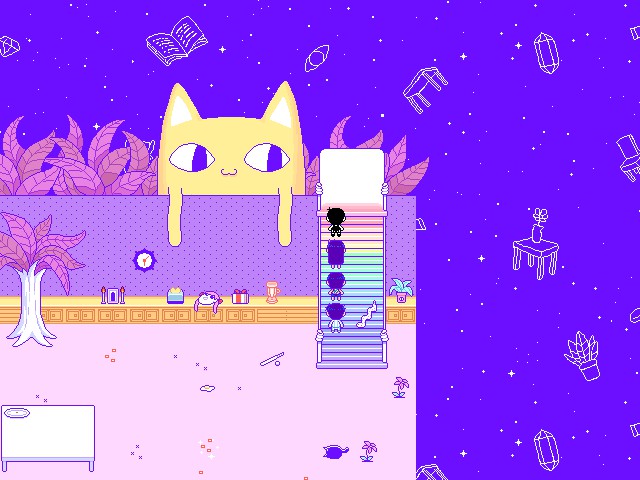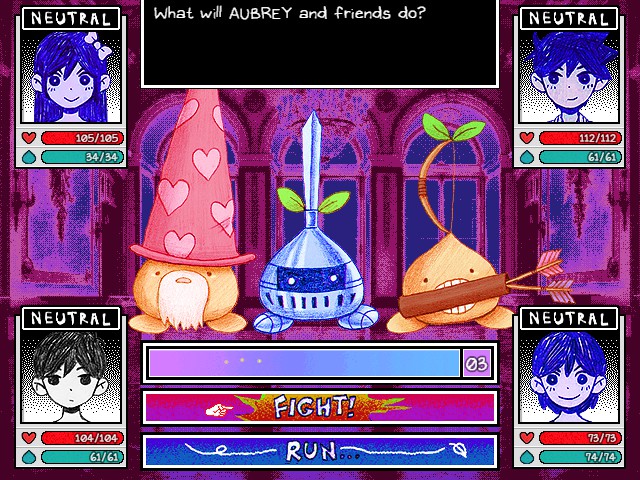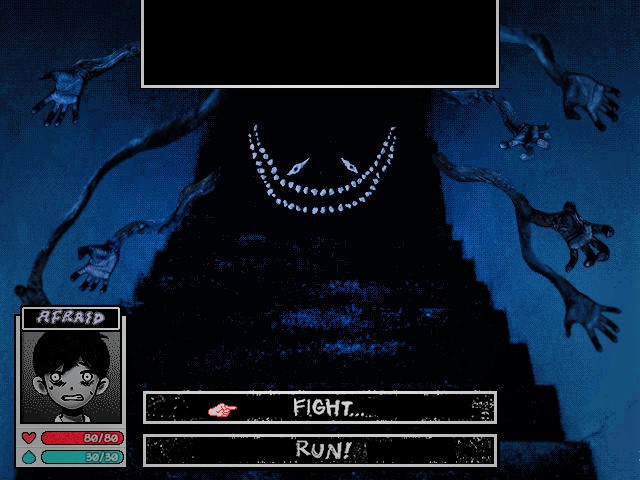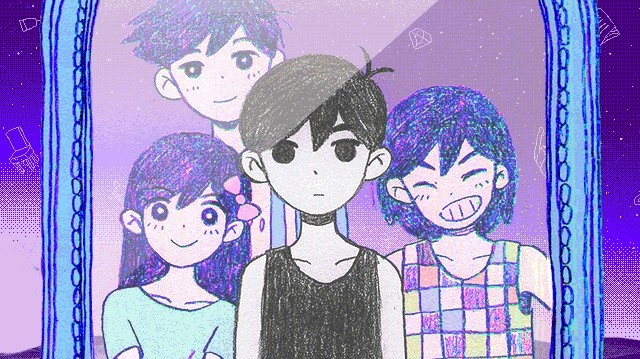Our Verdict
Omori's ending is brutal, but its characters and humour put some heart behind the horror.
PC Gamer's got your back
What is it? A turn-based RPG that combines a cute adventure with a creepy uneasiness (emphasis on the creepy).
Expect to pay £15 / $20
Developer Omocat
Publisher Omocat
Reviewed on AMD Ryzen 5 3600, AMD RX 5700 XT, 16GB RAM
Multiplayer? No
Link Official site
There's a weird reputation surrounding games made in RPGmaker. The game engine is known for spawning a mix of your basic clunky demakes of classic RPGs and cult horror hits like Yume Nikki, Lisa: The Painful, Mad Father, and The Witch's House—games that surfaced on the fringes of game forums and quietly received overwhelmingly positive reviews on Steam.
The RPGmaker scene has dwindled over the years, which is why Omori almost feels like the ghost of a bygone era. Even though seeing the game's blocky visuals is like a blast from the past, this psychological RPG has all the makings of being a modern cult classic.
Omori follows the childhood antics of a group of kids during the Summer break, but instead of discovering the wonders of the real world, the group is exploring a fantastical dream world conjured by a sleeping boy, the titular Omori. The majority of the game takes place in this dreamworld where the group is searching for their missing friend, but there are also parts that are played in reality, specifically a quiet suburban neighborhood where all the kids live.

Doesn't sound like much of a horror game, right? There aren't any scary monsters and existential horrors in the colourful dream world, but that's the entire point. Unable to control or face certain events in the real world, Omori conjures up this fantastical headspace to escape, like a safety blanket. I'm going to have the skirt around the real-world horrors to avoid spoilers, but an event happened several years ago that ties the group together. Each character is unable to escape the fallout of what happened and soon these fears begin to creep into Omori's dream world.
When these horror elements reveal their distorted heads it's pretty scary stuff, but the majority of the time, you're exploring the dreamy fantastical world full of jokes and puns. It's very much like Undertale in this respect, and much of the comedy comes from the kooky characters.
The boss characters also provide some laughs, like Sweetheart, an obnoxious pop star who wields a giant heart-shaped mace and cackles like an anime supervillain.
There's Pluto, the ultra buff planet who loves to flex and teaches you powerful battle abilities. Then there's Life Jam Guy, a riff on the Kool-Aid mascot, whose enthusiasm for health items knows no bounds. The boss characters also provide some laughs, like Sweetheart, an obnoxious pop star who wields a giant heart-shaped mace and cackles like an anime supervillain.
Aside from the main mission of finding your missing friend, Omori is full of little secrets and rewards for exploring every part of its world. Surprisingly, it's a beast of a game, and despite finishing a 20-hour playthrough, I feel like I've barely scratched the surface with all the extra side-missions and mysteries. I missed a lot because of the sheer volume, but I overlooked others because the RPGMaker visuals made them hard to spot.
Sprites for chatty characters, objects to smash, and readable notes often get lost in visual translation, looking like background decoration instead of things I could interact with. I almost missed one of my favourite lines from the game due to this, a friendly ghost in the corner of a library who ponders out loud: "Is a ghost a gas?"
It's almost funny that in this vibrant world, you play as the titular Omori, our silent protagonist whose apathy is borderline creepy. Something is seriously off with his kid, and this is where the game's psychological horror comes from. His attitude is understandable really, if I was plagued by metaphorical ghosts and monsters I wouldn't have anything to smile about either.
This carries through to the game's combat. While Omori's rag-tag group uses the likes of dodgeballs and spatulas as weapons against bunnies and sprouts, Omori's chosen weapon is a sharp, slender knife which he cuts and stabs enemies which is so much unnerving than the comedic 'bonk' of a frying pan.

Emotional manipulation
Children wielding deadly weapons aside, battles carry out similarly to other turn-based RPGs, but with a clever twist. Combat has an 'emotional system' where a character's emotional state influences how they fight. Happy, sad, and angry work similarly to rock, paper, scissors, and each one enhances the group in different ways. A character can buff the party's defences by reading them poetry to make them sad or childishly annoy another to make them angry so their attacks get a boost.
Apart from healers, I often find in RPG parties that characters rarely interact with each other, but with Omori's emotional states, the group feels like a single unit and are always buffing each other in interesting and fun ways. Also, when a member of the party dies their avatar turns into a piece of toast, which is hilarious.
There are lots of classic RPGmaker horror moments like looking in a mirror to see something else looking back at you.
Battles are also the only time when you get to see characters up close. Up until that point, they're just a handful of pixels, but in combat, you get to see them in full art. This reveal really packs a punch, whether it's seeing a character you've known for hours in detail for the first time or a horrible monster up-close.
Approaching a blob of black pixels might not seem that scary, but in battle, you're suddenly confronted with their real appearance. It feels too close for comfort, and coming face to face with these horrors had me hovering over the 'run' option a handful of times. But in classic horror game form, the run option is useless and there's no escape. Monsters are an amalgamation of gaping smiles, eyes peeking at you from the dark, sprawling arms with grabbing hands—all very creepy. They're a hodgepodge of art styles, too. Scratchy pencil drawings, photorealistic limbs, and weird lumps of clay all give the monsters this unsettling feeling that they don't belong in Omori's world, and it really heightens the horror.
As much as I enjoyed the menacing encounters with Omori's various monsters, the horror elements do wade into the dark waters of mental health and the story gets a little grim towards the end of the game. There are certain decisions made in the game's climax that also undermine some of the game's main story beats.

It was all a dream
Throughout my time of playing Omori, I couldn't help think of it as the spiritual successor to Yume Nikki. A boy who sleeps his troubles away and a girl who sleeps to face them, both with surreal imagery and countless secrets hidden away in their respective dream spaces. There's even a part in Omori where you're trying to navigate a sequence of doorways that lead to surreal memories, a direct homage to Yume Nikki. There are lots of classic RPGmaker horror moments like looking in a mirror and seeing something else looking back at you.
The influences are there in plain sight, but Omori doubles down on what made the mysterious Japanese RPG so iconic. It has all the scares and secrets its predecessor, but it encases that in a huge, overarching story, with multiple worlds, tonnes of characters, brilliant artwork, a 100-song musical score, and a fully-fledged RPG battle system.

It nearly slips into the trope of everything being solved with 'the power of friendship', but thankfully its heartfelt moments are backed up with great storytelling and characters you really feel for. Omori was developed over the course of six years by the Omocat team (originally just one person) and you can feel the passion that the team put into it.
Omori is a kid who is living through sleeping, scared to face the realities and consequences of the real world. Wanting to shut yourself away and hide is a child-like response but it's one that's tempting to carry through to adulthood. The need to escape to another world away from our anxieties is a feeling that's universal, and why Omori wants to protect himself is understandable, even if he is a little creepy. What's important is choosing to take that first step outside, hopefully, the first of many, and Omori captures this sentiment masterfully.
Omori's ending is brutal, but its characters and humour put some heart behind the horror.
Rachel had been bouncing around different gaming websites as a freelancer and staff writer for three years before settling at PC Gamer back in 2019. She mainly writes reviews, previews, and features, but on rare occasions will switch it up with news and guides. When she's not taking hundreds of screenshots of the latest indie darling, you can find her nurturing her parsnip empire in Stardew Valley and planning an axolotl uprising in Minecraft. She loves 'stop and smell the roses' games—her proudest gaming moment being the one time she kept her virtual potted plants alive for over a year.



